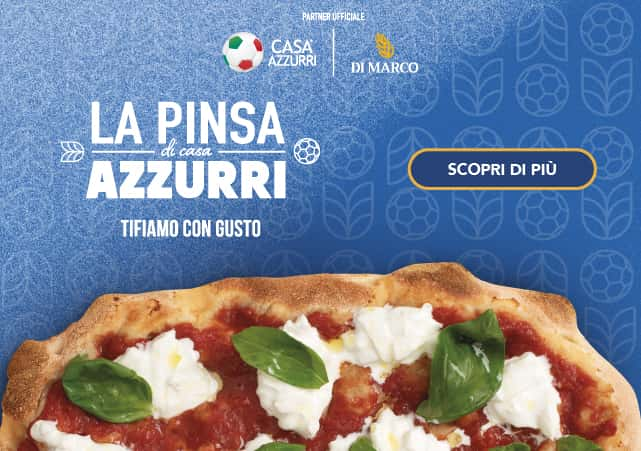Right now, there are about 68 thousand pizzerias in Europe, serving a population of 741 million people. On average, there is one pizzeria for every 10,000 people.
Pinserias, of course, are far fewer: the most recent statistics, which go back a few years anyway, speak of about 5,000 worldwide. We explain why, in our opinion, this is a great opportunity for restaurateurs.
The pizza market is still growing
Starting with pizza, very interesting research by IMARC Group claims that the European market is expanding and can grow by an average of 1.5% per year between now and 2032. The reasons are very interesting: the market growth would be attributable, at least partially, to the "growing demand for quick and ready meals, a trend accelerated by the hectic lifestyle of the European population."
As usual, there are normal and physiological differences between one country and another, but pizza is a hit everywhere. For example, according to Dataessential in France 7 out of 10 consumers eat at least 1 pizza a month, and as many as 8 out of 10 in Germany and Spain. Really interesting, too, are the different expectations of European consumers about Italian cuisine, to which pizza belongs: 66% of German consumers expect high quality products and raw materials, while in France homemade products and preparations are expected.
The challenge for pizzerias is to stand out
As seen above, the pizza market is expected to grow in Europe. In the Western region alone, it is worth about 60 billion, equal to that of all of North America. Despite nearly 70 thousand pizzerias and multiple chains sharing the largest share of the market, pizza is still a big opportunity for restaurateurs.
Rather, the real challenge is to shine out: how to get into the consumer's mind when there is a pizzeria on every block? How to show the uniqueness of the establishment? How to seize the opportunity of market growth and, at the same time, win the challenge with competitors and large chains?
One answer can be the quality of the food and experience, good value for money, the competent and kind staff, but we would like to add two thought-provoking elements that lead us straight to Roman pinsa: the ability to comply with trends and innovation. Let's look at them individually.
How to pander to trends in food
Despite the explosion of supply, in Italy we usually consider pizza as a traditional dish, associated with a dozen or so recipes. While this is true on superficial observation, the food trends are changing all the time, as they do in every country in the world.
Consider the need for healthy and light cuisine even when going to restaurants, a trend that was barely hinted at 20 years ago and cannot be ignored today; or, the increasing focus on sustainable cooking and the integration of vegan and vegetarian options into menus. Following the evolution of food trends is the first key factor to stand out.
The power of innovation
To stand out, restaurateurs must focus on innovation, meaning they must try to go beyond traditional recipes and service. Here, innovating means introducing new ideas and techniques that enhance the customer experience. Some ideas: sought-after ingredients such as alternative flours and gourmet seasonings, experimentation with special cooking techniques that enhance the flavours and texture of the food.
Pinsa makes you shine out
We usually define pinsa as synonymous with innovation in the pizza world. On closer inspection, offering pinsa to customers helps restaurateurs stand out without much effort, because it is innovative in itself and panders to customers' food trends. The success of pinsa, which obviously cannot be compared to that of a centuries-old product (pinsa was born in 2001), is due to the desire to evolve a market that has been stuck in its positions for too long, unable to indulge the desire for lightness, taste and easy digestibility that people were clamouring for.
So yes, offering pinsa to customers is a step in the right direction. The fact that in some countries it is not so well known is a huge advantage for restaurateurs, because it intrigues, people are not familiar with it, it is something new and innovative. However, you have to be able to introduce it in the right way: it is not a pizza with an oval shape, but something totally new starting from its "core," that is, the flours and dough.
Is it better to open a pizzeria or a pinseria in Europe?
It is impossible to give a clear-cut answer to this question, given the infinite variables involved.
In fact, no restaurateur is forced to choose: we suggest offering pinsa to stand out and be successful, but you can safely integrate it into your pizzeria and the "classic" menu that customers have always appreciated. Especially for those who already have an established venue, the gradual approach is obviously the appropriate one: start by having both in your menu and then focus more on the one that gives the greatest prospects of success in the long run. If, on the other hand, you open a new place, it depends a lot on how much you want to dare and on your appetite for risk: pinsa is innovation and can be an unprecedented success, but it obviously cannot rely on the same name, on recognizability and on the centuries-old tradition of pizza; its success is strongly connected to the quality of the offer, to the ability to enhance its innovative side and to convey the right message to a consumer who does not necessarily already know it. It's a challenge, of course, but the premises are excellent: in Italy, pinsa sales in supermarkets have grown 40% in the last year, a sign that people really like the product.


